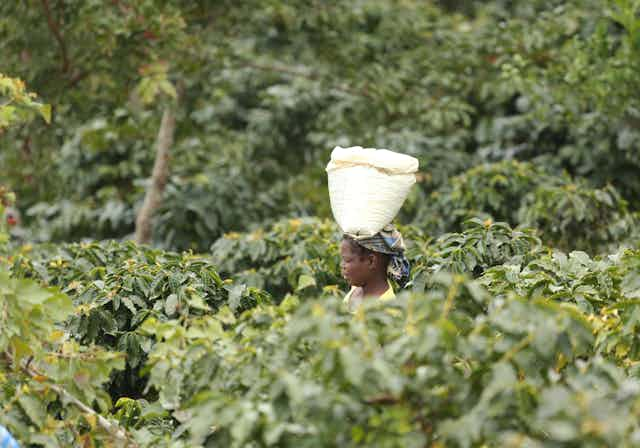Six months ago, you may not have thought much about where your groceries were produced. But chances are you’re thinking about it now.
The COVID-19 crisis has put food supply chains under incredible stress, and stories on shortages of everything from meat to baking ingredients have been plentiful.
But even with the increased recent attention, most supply chains remain murky. Consumers can play a key role in lifting that cloud.
Supply chain transparency has sporadically received widespread attention before. In the 1990s, Nike was famously the target of global consumer boycotts due to concerns about working conditions in its manufacturing plants.
This consumer activism forced the company to make major changes, such as establishing minimum working ages, conducting regular factory audits and publishing where Nike products are made.
Despite progress, calls for consumer action on dangerous working conditions in supply chains for a range of products continue.
An array of claims to decipher
The COVID-19 crisis highlights the prospect of greater consumer engagement in the food supply chain. Browsing the shelves at your grocery store, you may come across a bewildering array of claims related to a product’s characteristics or origins.
There are, for example, nearly 150 different eco-labels on food that certify claims about a product’s environmental and social characteristics. Seafood, beef, coffee and bananas are just some of the many products covered by eco-labels.
Many claims of where products come from or other characteristics, however, rest on weak foundations. But consumers can push companies for continued innovation to illuminate the invisible parts of the supply chain and strengthen the credibility, transparency and veracity of their claims.
Read more: Supply chain innovation can reduce coronavirus food shortages
In many cases, this can be done with existing technology. Blockchain, chemical footprinting and drones are becoming more reliable as they become cheaper. They are also increasingly being used in supply chain auditing and eco-labelling, and there’s scope to do much more.
Consider the example of the Marine Stewardship Council that provides fishery and seafood traceability certification programs. The council’s eco-label is “only applied to wild fish or seafood from fisheries that have been certified to (the MSC’s) standard.”

It uses state-of-the-art DNA testing to ensure the traceability of certified seafood, resulting in mislabelling rates of under one per cent, an impressive statistic since mislabelling of seafood can average 30 per cent.
DNA testing is not applicable to all foods, but it is rarely used despite its potential in improving supply chain integrity.
In-person audits are ineffective
Most supply chain certifications draw only sparingly on the latest technologies. Instead, they rely heavily on in-person audits, which can be ineffective.
Our recent research has shown that technology-enhanced auditing can improve the timeliness and veracity of audit data collection and analysis, which can in turn strengthen the credibility of supply chain certifications advertised to consumers. In another study, we’ve further found that the COVID-19 crisis can help accelerate the use of technology in supply chain audits.

Technology can also increase the resilience of supply chains, so they are better able to respond to shocks like a global pandemic.
For example, technologies such as sensors, satellite imaging and cloud computing can improve visibility deep into the supply chain and improve co-ordination between suppliers and buyers. Real-time supplier monitoring can provide early warnings of potential problems such as working conditions, inventory shortages or production breakdowns.
These technologies cannot, of course, eliminate the possibility of future shortages, but they can make supply chains less likely to break.
Consumers can play a more active role in driving improvements throughout supply chains. Purchasing decisions are one key lever.
Consumer engagement is key
For example, consumers have indicated a willingness to pay a premium for products made under good working conditions, but the lack of trustworthy information on those conditions is a barrier. Consumers can also actively push for the sharing of more and better quality information to reduce mislabelling and other undesirable activities, such as the trade of endangered species.

Going further, consumers can get more directly involved in supply chain monitoring. For example, in addition to satellite imaging, Global Forest Watch has used crowd-sourcing to monitor forest change. Unilever, which makes dozens of products you’ll find at your local grocery store, has used Global Forest Watch to better understand deforestation in its supply chain.
Portable technologies on the rise
And in the near future, consumers might even be able to validate the content of food labels by using simple portable technologies. No matter how they engage, consumers need to take a more active role in promoting and demanding greater supply chain transparency.
Read more: DNA barcodes — sci-fi tech to safeguard environment
The pandemic has more people thinking about supply chains than ever before.
This increased awareness presents a chance for consumers to become more engaged in where and how products they buy are produced.
Consumers need to push for more transparency and higher veracity information on where products come from, but they also need to take greater responsibility for what they buy and to participate wherever they can in supply chain monitoring.

